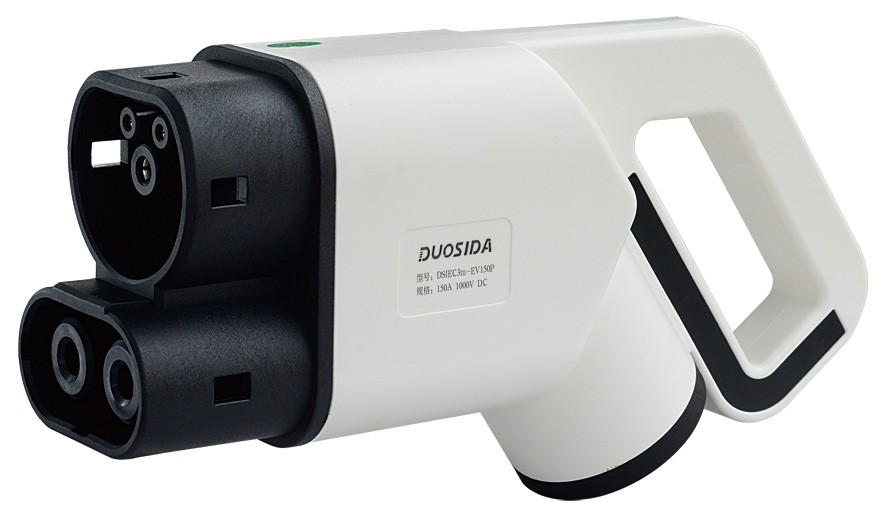This comment is written from Australia. Most information should be the same for Europe, but possibly not all.
You have 2 main types of charger: DC fast, and AC destination.
AC (destination) chargers are technically not chargers, just Electric Vehicle Supply Equipment (EVSE). They provide AC power from the grid (and a signal telling the car how much power is available), and the car's onboard charger does the AC to DC conversion to charge the battery. Your car's onboard charger is probably limited to 3.6kW (15A at 230V). You can still plug in to faster chargers (EVSEs), but your car will only take 3.6kW max.
The DC chargers are actual chargers (although the charging unit is often 2-5 meters away from the cable holder). These bypass the car's onboard charger and directly connect to the battery. This allows for much faster charging, but the communication protocols have to be more complex to allow the charger to interface correctly with the battery.
Your DC fast charge port is CHAdeMO. The 2 part charger cables you have seen are likely CCS. Unfortunately, you can't get an adaptor for your car for many complicated reasons involving communication timings, voltage requirements, and connector locking. All DC chargers come with attached cables.
Your car can probably take about 50kW from a fast charger. This will gradually reduce as the battery charges, and it's usually not worth charging past 80% on a rapid charger due to the limited charging speed. The Leaf also has an issue with battery overheating when fast charging. This will cause the charge rate to be dramatically reduced to protect the battery health. You'll really only see this if rapid charging multiple times in one day.
Your AC charging port is type 1 (J1772). The other main option is type 2 (Mennekes). Because the onboard charger is doing all the work, you can get an adaptor between the two.
It's important to note here that the type 2 cable has 4 possible connectors (2 male, 2 female). The difference is the length of the connector, and is designed to prevent people stringing multiple type 2 to type 2 cables together. The downside is that a type 2 to type 1 cable (used to plug your car into a "byo cable" charger) will not connect to a charger with attached type 2 cable. Likewise, an adaptor that can connect to a type 2 cable will not plug in to a "byo cable" charger. If you want full compatibility with all chargers you'll need to have a type 2 to type 1 cable, and a type 2 to type 1 adaptor.
It is not possible to get an adaptor between AC and DC connectors. You would need a charger or inverter, and those are very bulky and cost over £5,000. Not what you want in the middle of a cable.
You may find that you don't need to charge away from home as much as you originally thought. I've had a type 2 to type 1 charger for several years and only used it once (although it was quite convenient then).
EDIT: Feel free to join https://lemmy.ml/c/nissan_leaf for any Leaf-specific questions.
